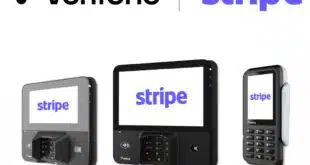As the deadline inches closer for gas stations and convenience stores with fuel pumps to install in-pump EMV card readers, the good news is that c-stores are making steady progress. Overall, 31% of c-stores report not having any pump EMV-ready, down from 52% in the spring and 70% in 2019, according to a recent survey from Conexxus Inc., which develops technology standards for convenience stores and gas stations.
The bad news is that while 61% of respondents expect to be 100% compliant in time for the April 2021 deadline set by the card networks, 39% don’t.
A deep dive into the numbers reveals an even more troubling trend: c-store chains with more than 50 locations are the most likely candidates not to be 100% complaint at deadline. The biggest laggards are the largest chains with more than 500 locations and medium-size chains with between 51 and 200 locations.
Of the largest c-store chains, 33.3% say they currently have no working EMV readers at the pump, while 66.7% have installed EMV at less than 25% of their pumps. Among chains with 51 to 200 locations, 46% have installed EMV readers at less than 25% of their pumps and 23% have yet to install them.

Hampering deployment among these two segments is that larger chains tend to work with multiple POS technology providers, which creates a hodge-podge of POS applications and hardware, says Linda Toth, managing director for Conexxus. “The myriad combination of equipment makes implementation more complex, because no one vendor can provide a single solution,” Toth says. “It seemed like the industry was starting to get a handle on the issue during the first quarter of 2020, but since Covid-19 there has been a pullback.”
Indeed, when shelter-in-place orders went into effect during the spring, they sidelined a significant number of EMV technicians, which backed up deployment. “It also slowed application development and certification,” Toth adds. “Even with businesses returning to work, there remains a slowdown from the shadow Covid has cast.”
Overall, 30% of respondents cite lack of software as a primary reason for their delay; 27% cite lack of certification for their EMV applications; and 13% cite lack of hardware. Complexity of deployment was cited by 27% as the primary reason for delaying deployment, while 34% cited myriad reasons for the delay, including Covid-19 and cash-flow management concerns. Cost of installation remains an issue, with 16% of respondents saying they still do not know how they will pay for EMV at the pump.
The price to install EMV can be as much as $40,000 per pump by adding such bells and whistles as loyalty, fleet card, and third-party marketing/discount programs. A fuel pump replacement with a bare-bones EMV card reader is about $20,000.
“Cost and justification of the cost are still issues,” Toth says. “With the economic uncertainty right now, a lot of c-stores are unsure how they will pay for EMV and small c-store operators don’t have the profits to put into it.” Toth adds that Conexxus and acquirers are making headway when it comes to educating c-store operators about cost justification by explaining the impact fraud will have on their business if they are not EMV-compliant. That has helped many c-store chains prioritize which stations to make EMV-complaint, such as those in high-risk areas, Toth says.





